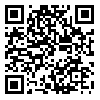Volume 81, Issue 5 (August 2023)
Tehran Univ Med J 2023, 81(5): 339-348 |
Back to browse issues page
Download citation:
BibTeX | RIS | EndNote | Medlars | ProCite | Reference Manager | RefWorks
Send citation to:



BibTeX | RIS | EndNote | Medlars | ProCite | Reference Manager | RefWorks
Send citation to:
Alimiri Dehbaghi H, Khoshgard K, Sharini H, Jafari Khairabadi S, Naleini F. Diagnosis of pneumothorax using machine learning algorithms and radiomics: Investigating the possibility of replacing simple chest radiography instead of CT scan in order to reduce the radiation dose. Tehran Univ Med J 2023; 81 (5) :339-348
URL: http://tumj.tums.ac.ir/article-1-12588-en.html
URL: http://tumj.tums.ac.ir/article-1-12588-en.html
Hanieh Alimiri Dehbaghi * 
 1, Karim Khoshgard1
1, Karim Khoshgard1 
 , Hamid Sharini2
, Hamid Sharini2 
 , Samira Jafari Khairabadi3
, Samira Jafari Khairabadi3 
 , Farhad Naleini4
, Farhad Naleini4 


 1, Karim Khoshgard1
1, Karim Khoshgard1 
 , Hamid Sharini2
, Hamid Sharini2 
 , Samira Jafari Khairabadi3
, Samira Jafari Khairabadi3 
 , Farhad Naleini4
, Farhad Naleini4 

1- Department of Medical Physics, School of Medicine, Kermanshah University of Medical Sciences, Kermanshah, Iran.
2- Department of Biomedical Engineering, School of Medicine, Kermanshah University of Medical Sciences, Kermanshah, Iran.
3- Student Research Committee, Kermanshah University of Medical Sciences, Kermanshah, Iran.
4- Department of Radiology, School of Medicine, Kermanshah University of Medical Sciences, Kermanshah, Iran.
2- Department of Biomedical Engineering, School of Medicine, Kermanshah University of Medical Sciences, Kermanshah, Iran.
3- Student Research Committee, Kermanshah University of Medical Sciences, Kermanshah, Iran.
4- Department of Radiology, School of Medicine, Kermanshah University of Medical Sciences, Kermanshah, Iran.
Abstract: (712 Views)
Background: The use of artificial intelligence algorithms to help with accurate diagnosis in medical images is one of the most important applications of this technology in the field of medical imaging. In this research, the possibility of replacing simple chest radiography instead of CT scan using machine learning models to detect pneumothorax was investigated in cases where CT is usually requested.
Methods: This study is analytical and was conducted from November 2022 to May 2023 at Kermanshah University of Medical Sciences. The data used in this research was extracted from the files of 350 patients suspected of pneumothorax. The collected images were pre-processed in MATLAB software. Then, three machine learning algorithms, including Logistic elastic net regression (LENR), Logistic lasso regression (LLR) and Adaptive Boosting (AdaBoost) were used. To evaluate the performance of these models, the criteria of precision, accuracy, sensitivity, specificity, area under the receiver operating characteristic curve (AUC), F1 score, and misclassification were used.
Methods: This study is analytical and was conducted from November 2022 to May 2023 at Kermanshah University of Medical Sciences. The data used in this research was extracted from the files of 350 patients suspected of pneumothorax. The collected images were pre-processed in MATLAB software. Then, three machine learning algorithms, including Logistic elastic net regression (LENR), Logistic lasso regression (LLR) and Adaptive Boosting (AdaBoost) were used. To evaluate the performance of these models, the criteria of precision, accuracy, sensitivity, specificity, area under the receiver operating characteristic curve (AUC), F1 score, and misclassification were used.
| Results: In the AdaBoost model, the accuracy value in radiographic and CT images was calculated as 98.89% and 98.63%, respectively, and the precision value was calculated as 99.17% and 98.27%, respectively. In radiographic images, the AUC value for AdaBoost model was calculated as 100% and in CT scan images as 96.96%. The F1 score for the same model in radiographic was 99% and in CT images was 98.68%. The specificity value for the AdaBoost model was calculated as 99.45% in radiographic images and 94.67% in CT scan images. In the LLR model, the AUC value for radiographic and CT scan images was 99.87% and 99.02%, respectively. Conclusion: According to the criteria evaluated in the present study, two LLR and AdaBoost models have similar performance in radiographic and CT images in terms of pneumothorax detection ability, so that this complication can also be diagnosed with high precision level using machine learning techniques on the radiographic images and thus receiving higher levels of radiation doses due to CT scan can be avoided in these patients. |
Type of Study: Original Article |
| Rights and permissions | |
 |
This work is licensed under a Creative Commons Attribution-NonCommercial 4.0 International License. |



